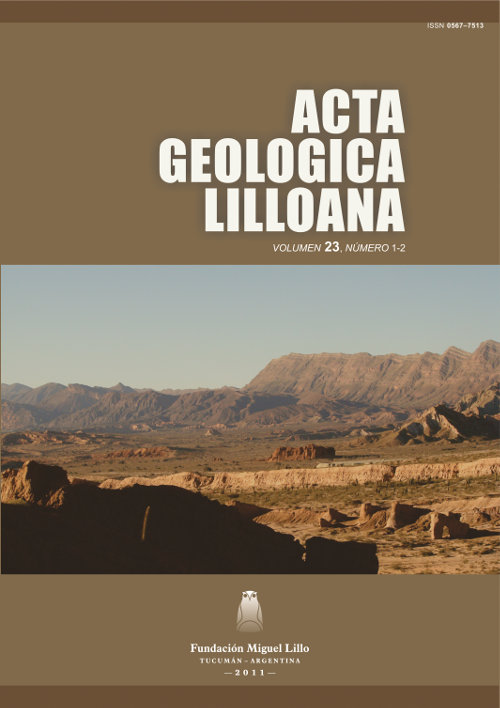Neopaleozoic rhacopterid fronds of South Americ a: taxonomy and morphologic evolution.
Acta geológica 23 (1-2):2011
Keywords:
Nothorhacopteris, morphologic evolution, taxonomy, Late Paleozoic, South AmericaAbstract
The study of monopinnate frond s from the Upper Paleozoic basins of South America allows us to distinguish characterist ic rhacopterid species in Gondwanan regions and ecotonal areas. In these areas, the autho rs have conducted fieldwork, have collect ed material from the field and have reviewed materi al from different collections of South Amer ica. Rhacopterid fronds have been identified in Car boniferous and Lower Permian formations in the Paracas (Perú) and Copacabana (Bolivia) peni nsulas corresponding to the Madre de Dios Basin, and Gondwanan areas such as Paganzo, Us pallata-Iglesia, San Rafael and Tepuel- Genoa basins (Argentina). Eocarboniferous fronds co llected at the Copacabana peninsula al- lowed the identification of a particular architectu re of the pinnules. These findings lead a reinterpretation of fundamental traits of the mesophy ll such as the leaf blade thickness, divided in segments limited by fibers and veins that are sp read out without going to the adjacent segment. The analysis of the architecture of the mi ddle portion of the pinnules of « Nothorha- copteris » of South America enables the recognition of three characteristics: permanent ge-neric features, variable attributes in the same spe cimen and variable at specific level through time. Recognition of these features leads to group the species into three morphotypes or groups, which correspond to the species that are re tained in the genus. Applying these cri- teria, a clear correspondence between morphological groups and three species of « Nothorha- copteris » is observed: the specimens included in the group A corresponds to N . kellaybele- nensis (Late Mississippian), group B corresponds to N . argentinica ( Pennsylvanian) and group C corresponds to N . chubutiana (Cisuralian). Evolutionary trends are recognized i n rhacopterid fronds of South America in a period of 60 million y ears. Generic and specific diagnosis are emended.






